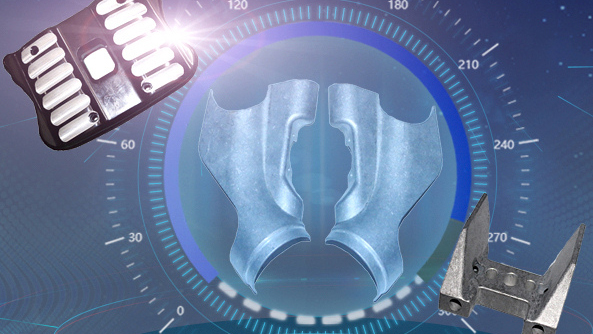Mastars is a company specializing in prototyping, rapid prototyping, CNC parts processing, 3D printing, laser forming, sheet metal parts manufacturing, rapid sheet metal prototyping,volume production and mold reproduction services.
Gas-AssistedInjectionMoldingProcess
Gas assisted injection molding technology was first used in mass production in 1985. Initially, it was developed to overcome the dent problem caused by shrinkage. A certain amount of gas is blown in during injection and internal pressure is applied during the cooling phase of the polymer before the mold is opened. With very precise computer control, slender and complex molds can now be inflated. Each production time will be slightly different because the computer adjusts for slight changes in material properties and flow.
The process uses improved injection molding equipment:
In stage 1, the plastic is injected into the mold cavity, but not completely filled.
In stage 2, gas is injected, which forms bubbles in the molten plastic and forces it to fit the mold. The simultaneous injection of plastic and gas produces a more uniform wall thickness, because as more plastic is injected, the air pressure pushes it closer to the mold.
In stage 3, as the plastic cools and solidifies, the gas pressure is maintained so that the shrinkage can be minimized. Finally demould and take out the product.

Multi shot Injection Molding Process
Multi shot injection molding process is also known as multi-color injection molding, multi material injection molding and overlapping injection molding. Here, it is called by its literal translation, that is, multi shot injection molding process.
Multi shot injection molding process is to inject two or more kinds of plastics together. Here are the differences between multi shot injection molding and other similar processes:
here we mainly introduce a typical multi shot injection molding process.
In stage 1, polymers a and B are simultaneously injected into different mold cavities, in which polymer A is injected into the lower mold cavity, and polymer B is injected into the pre molded polymer A in the upper cavity. Under pressure, the molten polymer forms a strong bond.
In stage 2, the mold is separated and the sprue is removed from the molded polymer a. At the same time, the finished product is discharged from the upper mold cavity. The rotating platen rotates to align the molded polymer a with the upper mold cavity.
In stage 3, the mold is closed again and the operation sequence is repeated.
In-Mold Decoration Process
In short, the in mold decoration process is used to add printed matter to plastic products during injection molding, so as to reduce secondary operations such as printing and spraying. The injection time of in mold decoration process will increase slightly. The process can be used to produce almost all injection molding products that need artistic beauty.
In stage 1, the printed PC film is loaded into the mold cavity before injection molding. The print face is placed inward so that during injection molding, the print will be protected behind the film of the PC.
In stage 2, when the thermoplastic is injected into the mold cavity, it is combined with the PC film (this is similar to multi injection molding).
In stage 3, the film is integrated with the injection molded plastic and has a seamless finish with a printed surface. When thermoplastic is injected, it is pressed against the mold surface under the pressure between 30 and 17000n / cm2. If the surface of the mold is textured, the PC film will be thermoformed to accurately fit the mold. The amount of pressure depends on the type of material and the required surface finish.
Mastars Industries CO., LTD
www.mastars.com
Email: marketing@mastars.com
Tel: +86 755-88210690
Mobile: +86 181 0029 4997
Add: Building 6,Blue Sky Industrial Park, Ditang Road, Shajing Town, Shenzhen City, Guangdong, China











